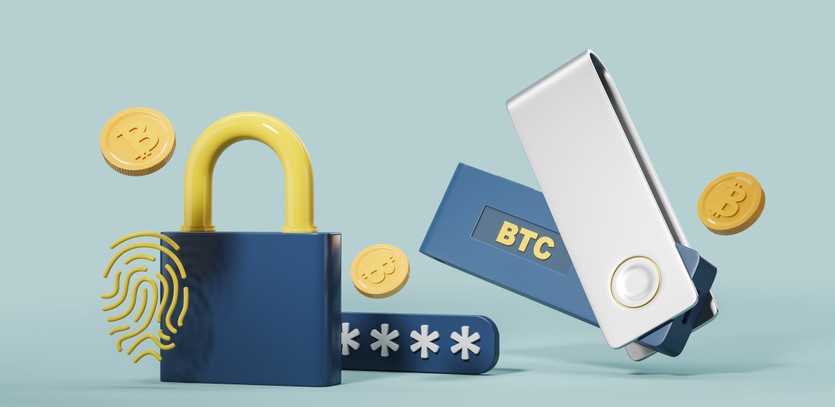Venturing into DeFi: Bitcoin's Resistance to Change and Unexplored Potential
Despite its renowned permanence and firm governing principles that lend it security yet limit swift modernization, the Bitcoin blockchain, the foundational network powering the pioneer cryptocurrency, doesn't shy away from progression and novelty. The quest to bring decentralized finance (DeFi) to Bitcoin has been fraught with obstacles, including disastrous waves of breaches and misuse in the DeFi realm resulting from initial attempts like cross-chain bridges and wrapped tokens. Nevertheless, developers tirelessly explore novel, more dependable methods to tap into the vast liquidity of the BTC pool.
The Bitcoin Taproot upgrade, rolled out in November 2021, was a milestone in extending additional features to Bitcoin's fundamental layer. Among its numerous advantages, like less expensive and more streamlined transactions, the Taproot upgrade also brought elementary smart contracts—the cornerstone of DeFi—into Bitcoin's ambit.
Bitcoin DeFi: An Initial Foray
Smart contracts, essentially autonomous agreements between several entities stored on a blockchain, unlock a plethora of DeFi capabilities. The infusion of smart contracts into Bitcoin's essential layer hinted at prevalent DeFi phenomena, like nonfungible tokens (NFTs) surfacing on the Bitcoin network, spurring developers into action.
Consequently, Bitcoin enthusiasts concocted their interpretation of NFTs using the Ordinals protocol, stirring a heated discussion about expanding the Bitcoin base layer's functionality versus overloading it with unnecessary elements. Ordinals, also referred to as Bitcoin NFTs, permit users to imprint digital content on the Bitcoin blockchain. Ordinals, introduced in January 2023, rapidly gained traction as an interactive way to engage with the base layer, crossing 3 million inscriptions.
Post the introduction of ordinals, BRC-20 tokens surfaced as an experimental token standard based on the Bitcoin Request for Comment (BRC) protocol. These tokens symbolized fungible assets on a one-to-one basis. However, the proliferation of meme-themed coins, such as Pepecoin (PEPE), using the BRC-20 standard resulted in a traffic problem, leading to a backlog of half a million transactions awaiting completion. This sudden surge in demand shot up transaction fees to $30 per transaction, substantially hampering the Bitcoin network's efficiency.
Bitcoin DeFi: A Second Attempt
In pursuit of enhancing NFT efficiency on Bitcoin, a new protocol, Bitcoin Stamps, also known as "Secure Tradeable Art Maintained Securely," was unveiled following ordinals. Unlike ordinals, Bitcoin stamps enable the incorporation or embedding of image data into the Bitcoin network by preserving image data across multiple unspent transaction outputs to boost decentralization and immutability.
While the second shot at introducing NFT usability to the Bitcoin network is generally viewed as a step up from ordinals, Bitcoin stamps are far from perfect. The protocol demands a canvas size of 24 by 24 pixels, restricting possibilities to pixel-art NFTs.
Still, the concern of contaminating the Bitcoin blockchain by storing data directly on the base layer is unresolved. Moreover, a contentious question persists within the Bitcoin community: Is there a need for NFTs on the primary Bitcoin chain?
Similarly, as BRC-20 was birthed from ordinals, stamps gave rise to their own tokenization standard dubbed SRC-20. Yet, while SRC-20 tokens enjoy superior immutability, they consume more block space than BRC-20 tokens, risking further congestion on the Bitcoin network if they gain popularity.
Bitcoin DeFi: The Shift to Layer 2
An alternative methodology seeks to address all the drawbacks of layer-1 (Bitcoin) DeFi by relocating NFTs and tokens to layer 2, thereby relieving congestion on Bitcoin, reducing fees, and creating additional use cases. Similar to how the Lightning Network addressed numerous aspects of Bitcoin payments as a layer-2 solution, NFTs and tokens can also shift to the second layer, thereby preserving the cleanliness and efficiency of the Bitcoin base layer. This eliminates the necessity for all transactions to rely on Bitcoin for settlement.
Mintlayer, a layer-2 solution that designs tools to facilitate DeFi on Bitcoin, aims to welcome Bitcoin to the world of NFTs, along with smart contracts, atomic swaps, and decentralized applications (DApps). Utilizing a layer-2 network directly on Bitcoin allows for lower minting and transfer costs, the addition of smart contract capabilities, and reduced base layer congestion.
Rather than struggling to bring DeFi onto the Bitcoin network via uncertain pathways like cross-chain bridges and wrapped tokens, Mintlayer enables direct exchanges of native Bitcoin for other tokenized assets minted right on Mintlayer, removing all go-betweens between Bitcoin and DeFi.
To tokenize assets with protocols tailor-made for particular use cases, Mintlayer has launched three tokenization standards. MLS-01 is intended for securities, stablecoins, and stock tokens to operate on Bitcoin, while MLS-02 is constructed for confidential transactions. The third, MLS-03, is exclusively for NFTs. As it's specifically designed with NFTs in mind, there's no requirement to write a smart contract, unlike ordinals and Stamps. MLS-03 also removes the limitations introduced by layer-1 attempts by harnessing the freedom of layer-2.
Enrico Rubboli, CEO of Mintlayer, stated, "It's thrilling to witness innovation on the Bitcoin blockchain. But, ultimately, NFTs and tokens need to be on layer 2. There are numerous constraints for NFTs and tokens in terms of size, smart contract capabilities, and immutability that Mintlayer won't be subject to."
DeFi on Bitcoin enables the sustainable and efficient utilization of decentralized financial applications on the Bitcoin network. By delegating the intricacies of DeFi to layer 2, Bitcoin users can now enjoy enhanced scalability, lowered transaction costs, and a broader array of financial services while still leveraging the security and robustness of the underlying Bitcoin blockchain.




